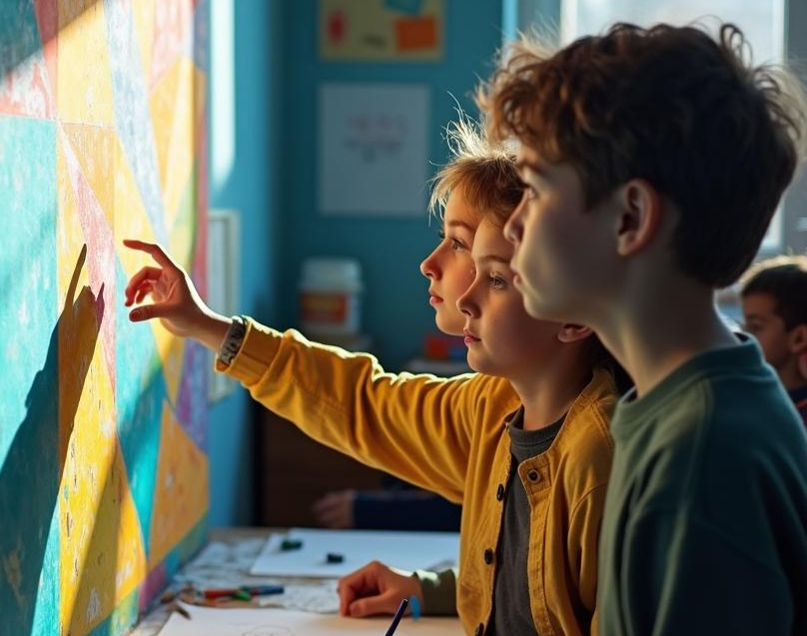In an increasingly globalized educational landscape, educators are continually exploring strategies for ESL learners to master academic subjects while enhancing their language skills. Teaching geometry through art provides a novel approach, where students engage with geometric concepts visually while practicing English. This interdisciplinary method combines art, geometry, and language learning, offering a multifaceted educational experience that fosters creativity, spatial awareness, and improved vocabulary, as well as listening, speaking, and writing skills in English.
Art as a Medium for Language Development
Art serves as a natural platform for communication, enabling students to express ideas and emotions through visual means. When integrated with language instruction, art-based activities encourage students to describe their creations, engage in discussions, and collaborate with peers—using academic language in meaningful contexts, which is essential for ESL learners. Vygotsky’s Sociocultural Theory (1978) supports this approach, emphasizing social interaction and language use in cognitive development. Through the combination of art and geometry, students use language not only to learn vocabulary but to articulate understanding, justify choices, and collaborate in problem-solving.
An Art-Based Lesson: See, Think, Wonder
- See: Students first observe an artwork, noting its complexity, shapes, lines, and patterns. They realize that understanding art involves not only their observations but also insights from their peers.
- Think: Students analyze their observations, engaging in thoughtful discussions about the artwork’s shapes and patterns. They stand together, pointing out different geometric elements, encouraging even shy students to participate. There is no wrong answer—only shared learning.
- Wonder: Students learn that exploration is about asking questions rather than finding the “right” answer. Teachers encourage them to pose open-ended questions and delve into further investigation, fostering curiosity and inquiry.
The “Turn and Talk” strategy is especially effective for engaging all students, particularly those hesitant to speak up. By pairing with a partner to discuss their ideas, each student has time to think, speak, and then share with the class. This approach makes students feel valued and respected, reinforcing the idea that every thought counts. Introducing vocabulary relevant to art and geometry allows students to apply new terms in discussions, solidifying their understanding.
Outcomes of the Lesson
Art, like beauty, lies in individual perception. What children see through art often differs from adult interpretations, as they immerse themselves in identifying details, lines, angles, and shapes. By following the “see, think, wonder” approach, students learn geometric terms typically found in specialized texts. They become more observant, informed, and engaged.
Art-based geometry lessons foster collaborative learning, which is essential for ESL students. Group projects encourage English communication as students discuss ideas, negotiate choices, and solve problems together. For example, in a group project, students might describe shapes, colors, and spatial arrangements, offering ample opportunities for language practice.
Conclusion
Teaching geometry through art is a powerful interdisciplinary strategy that deepens students’ grasp of geometric principles while supporting English language development. This approach creates a dynamic classroom environment that promotes both geometry learning and language acquisition. As educators seek innovative methods to teach content and language simultaneously, integrating art with geometry presents a promising model adaptable to diverse student populations.



